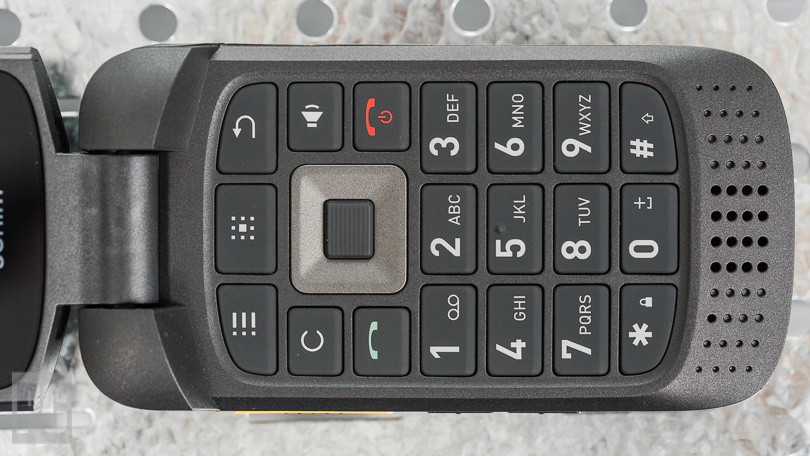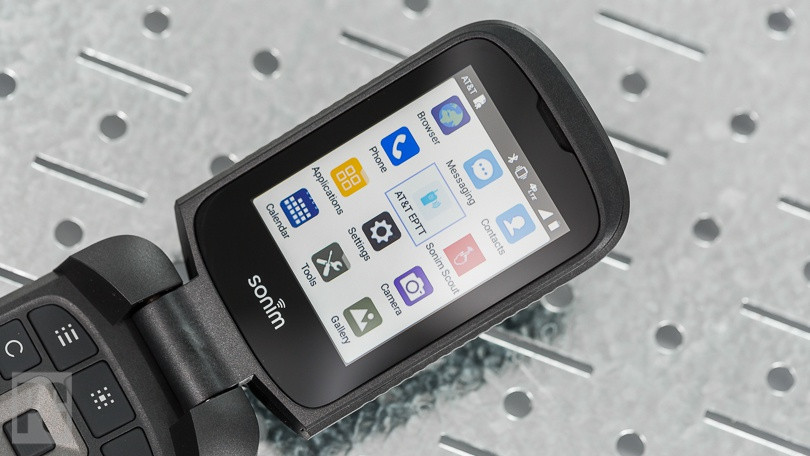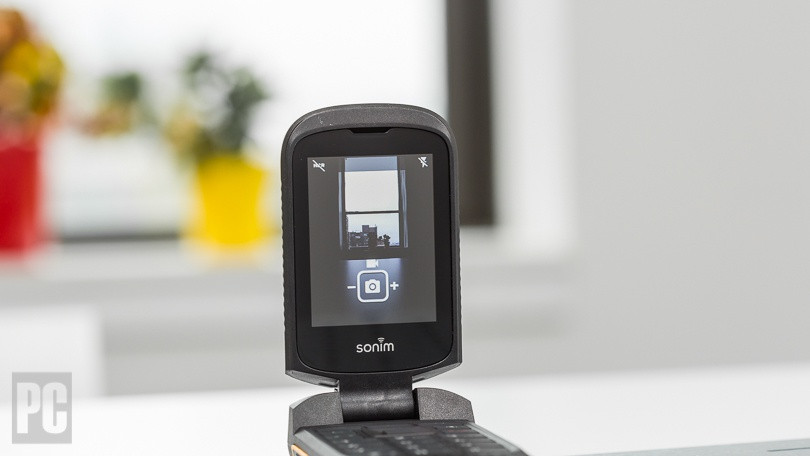PCMAG Reviews and Rates the Sonim XP3
Story By: Sascha Segan June 25, 2019 8:24AM EST
“People still want flip phones—I know because those people email me. There are some businesses with extreme work environments that smartphones can’t stand up to, parents who want to be able to call their kids but don’t want them surfing YouTube, and older folks who simply want to be able to make calls. Sonim’s XP3 is the best basic phone on the market. It’s a rugged, traditional flip phone that supports 4G calling on AT&T and Sprint. And at $240, it’s our Editors’ Choice for anyone who wants a phone that’s simple, loud, and reliable.
Design and Durability
Sonim has made rugged phones for more than a decade, but most of its phones have had brick-like form factors that weren’t appealing to everyday phone users. The XP3 is handsome—and more importantly, it fits in a pocket. That expands Sonim’s market beyond its usual clientele of building contractors, hotel employees, and forest rangers, and into anyone who wants a good voice phone that won’t break.
The XP3 is made from matte gray plastic, with a casually industrial look. It measures 4.4 by 2.3 by 1.1 inches (HWD) and weighs 6.88 ounces. It’s in the ballpark of classic flip phones from 10 years ago, like the Motorola E815.
It’s also wonderfully tough. The XP3 is IP68 waterproof and MIL-STD-810G ruggedized. Its physical buttons mean it’s fully usable when wet, even underwater. I dunked it for half an hour, and the speaker was a little quiet until it dried out and then it was fine. I then kicked it around like a hacky sack, leaned my full weight on it when the flip was open, and dropped it onto hard surfaces numerous times. If your work or life involves a lot of potential phone damage, this device will pay for itself quickly. Sonim backs all of this up with a three-year warranty. More than anything else, I think this justifies the $240 price.
On the front, there’s a monochrome display showing time, date, signal, battery life, and caller ID. Inside, there’s a perfectly adequate 2.6-inch, 320-by-240 LCD and big, backlit keys with nice separation. There are volume buttons on the side, along with a big, programmable yellow button that in theory is for push-to-talk, but can be set to quickly launch any application.
Under the screw-on back cover, there’s a removable battery and, surprisingly, two SIM card slots, but they don’t both work. If you put two SIMs in, it disables one of them. That’s disappointing, but US carriers don’t like dual-SIM phones.
The XP3 runs a gutted version of Android 8.1 on a 1GHz Qualcomm Snapdragon 210 chipset. It isn’t fast, but you mostly don’t notice, except for one odd thing: Many screens start out blurry, and then quickly resolve into sharpness. It’s irritating, but it isn’t a deal breaker.
The home screen can have a custom wallpaper. It also gives you quick access to the camera, messaging, calendar, and settings, with other options hidden behind the main menu; you can change those quick access options in settings if you like.
Android and LTE take a bit of a toll on the removable 1,500mAh battery. We estimate seven hours of talk time within two days of use, so maybe a charge every two or three days on average. The phone charges over USB-C or in an industrial cradle using some pop-port connectors on the back. Additional batteries cost $44.95.

The Best Phone For Calling
Call reception and quality are everything here, and they’re terrific. The XP3 has all of the frequency bands it needs for coverage: LTE bands 1/2/3/4/5/8/12/13/14/25/26/38/41/66, and HPUE (high powered user equipment) on Sprint. I’d like to call out a few of these: band 14 is AT&T’s FirstNet band, which gives priority access to government employees but can be used by consumers at other times. Bands 12 and 13 let AT&T and Sprint subscribers roam on US Cellular and other rural carriers. And a bunch of the other ones are for global roaming.
The phone supports voice-over-LTE on both AT&T and Sprint, and Wi-Fi calling on Sprint. It has HD calling, but not EVS. (EVS, which offers even better call quality than HD calling, requires a much higher-end modem.)
The earpiece is loud and crisp, transmissions through the mic have good noise cancellation, and the single speaker, on the chin below the flip, booms. If you flip the phone closed mid-call, you can set it to hang up or switch to speakerphone. The phone supports both Bluetooth and 3.5mm headsets, and it has a basic set of voice commands.
You can assign ringtones by contact, and there are a lot of good call-screening options: You can whitelist or blacklist by individual number, or by whether or not a number is in your phone book. You can also hide those whitelist and blacklist options behind a PIN for parental or employee control reasons.
The only downside is the vibration motor. While ringtones are customizable and loud, vibration is weak; if you throw the phone in a bag, make sure to have the ringer turned up.

Old School Apps
There are non-calling apps, but very few. There are no games, and you can’t download anything. For an even more restrictive experience, you can disable any apps behind a PIN-protected menu, if you want to kill the camera or music player, for example.
The messaging app is derivative of Google’s SMS app. It supports sending and receiving pictures and videos via MMS, and receiving, but not sending, emojis and stickers. You can type with triple-tap or T9.
The XP3 will play MP3 or AAC files from its 4.98GB of free storage or off a microSD card. You can build playlists on the phone, and you will see album art. There’s no streaming music, but audio quality via the 3.5mm headphone jack sounds great. There’s also an FM radio.
While the phone has a nearly unusable web browser, with a jerky cursor and a very difficult typing experience (and no email or over-the-top messaging apps), you can get other devices on the internet by using the XP3 as a Wi-Fi hotspot. It supports dual-band 802.11n, but not ac, Wi-Fi.
There’s also a clock with alarms and timers, a flashlight, a calendar, and a calculator. If I were to have all my dreams realized, there would be a little more cloud connectivity here. The phone is running Android, after all. It would be nice to import or sync contacts with Google, so you don’t have to upload VCF files. It would also be nice to run Spotify and to be able to upload pictures to Google Photos.

Talk, Don’t Take Pictures
The phone has a single 5-megapixel camera on the outside face. If you want to take a selfie, you have to turn it around and pray; there’s no viewfinder for those situations. It has very slow HDR and records 720p video.
Photo quality is blurry and smeary most of the time, and gets worse in low light. There’s also an audio recorder that gives you highly compressed, 8,000Hz mono AMR files.
The idea behind both of these functions is that they’re the absolute minimum quality needed to get the job done. The camera isn’t for Instagram, it’s for, “Hey, should I tighten this bolt or that one?” The audio recorder is for pinch-hit recording in conference rooms. At least it’s relatively easy to get the photos off the phone: Just plug in a USB-C cable and you can transfer files to/from your PC.
If you want a phone without a camera, good news. There’s a no-camera variant of the XP3, but you can also use the included management software to block the camera app under a PIN. That’s perfect for parents, for instance.
A Fantastic Phone
Most of the flip phones on the market right now are bad. All of the carriers are transitioning to 4G calling, leaving older flips that only support 2G and 3G networks behind. Those networks now have poorer call quality, and will have decaying coverage with time. The carriers leaned for a while on variants of the Alcatel Go Flip series, which aren’t good devices. Consumer Cellular’s Doro 7050 isn’t bad, and neither is Verizon’s Kyocera Cadence LTE, but neither stand out. In the higher-end voice phone market, the Punkt MP02 hasn’t been certified by US carriers and so doesn’t yet work on our 4G networks.
That leaves the Sonim XP3, and I really have one complaint about it: It isn’t available on T-Mobile. AT&T and Sprint have a killer voice phone here, and Verizon has a couple of decent options. T-Mobile has nothing. If your family or your business is on AT&T or Sprint, though, the solution’s clear: The Sonim XP3 is a flip phone to flip out over, with a rock-solid build, loud and clear voice calls, and a long warranty, earning it our Editors’ Choice.”
Author
Sascha Segan
